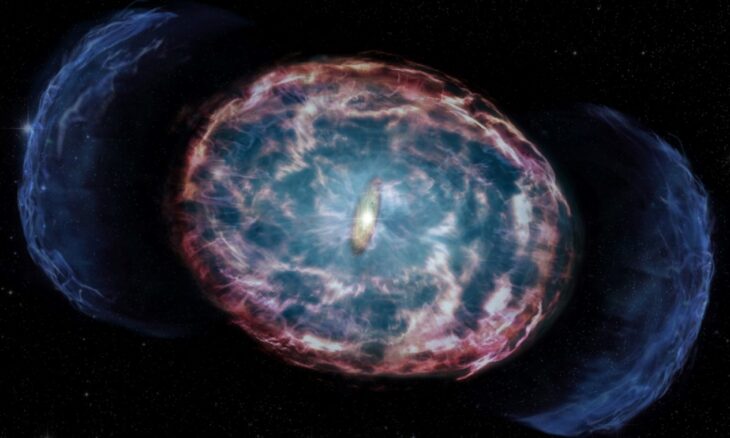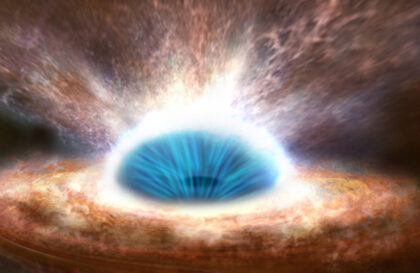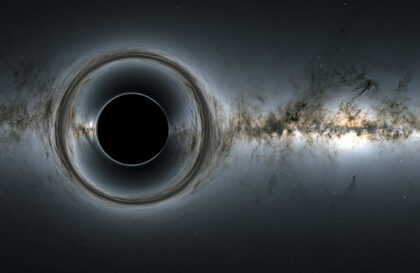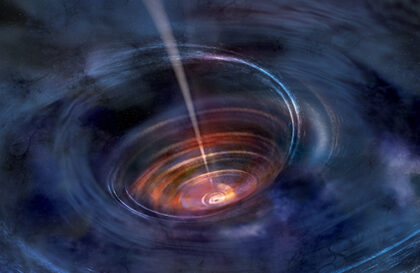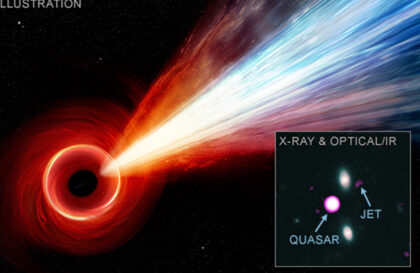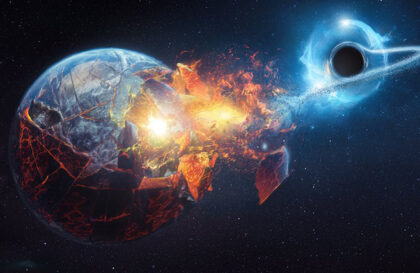The largest explosion in the universe was discovered as a result of the eruption of a supermassive black hole located in the center of the Ophiucus galaxy cluster at a distance of 390 million light-years from Earth.
The Ophiuchus cluster of galaxies is an association of thousands of galaxies, and also contains a significant amount of dark matter and hot gas. The analogy with the eruption of Mount St. Helens in 1980, when the top of the mountain was torn off, helps to understand the scale and force of this explosion. A crater has formed in the hot gas, the size of which is fifteen galaxies of the Milky Way lined up in a row.
Unusual curvatures
The first hints of this explosion were discovered in 2016 using the Chandra telescope, when researchers found unusual warps in the image of the cluster. From subsequent observations, it was possible to establish that this curved edge was formed by a shock wave and rarefaction of hot gas generated by jets from a supermassive black hole.
The energy required for such an explosion turned out to be orders of magnitude higher than previous astronomical events, and 5 times greater than that of the previous record holder MS 0735 + 74. This explosion can be compared to the creation of a cavity in the cluster, the size of which is fifteen galaxies of the Milky Path in a row.
The discovery was made using X-ray data from NASA’s Chandra and XMM-Newton telescopes of the European Space Agency, as well as radio data from the Murchison Widefield Array (MWA) in Australia and the Giant Metrewave Radio Telescope (GMRT) in India. Observations have shown that the radio emission is only visible from one side of the cluster, possibly due to differences in gas density.
Clusters of galaxies are the largest structures in the universe held together by gravity and contain thousands of galaxies, dark matter and hot gas.
But it happens otherwise.
A fallen star plugs the throat of a black hole
The hallmark of a black hole is star power. But there was a star that interrupted this feast.
This event took place in the galaxy 1ES 1927 + 654 at a distance of 300 million light years from Earth.
In the usual scenario, a black hole swallows up a disk of gas that circles around it, emitting X-rays from the superhot particles that accumulate around it. This light is visible even at such a great distance. But astronomers caught the moment when X-rays from the black hole’s corona suddenly disappeared for 40 days, and then flared again 100 days later. They became almost 20 times brighter than before this event. (Scientists did not see the black hole for some time, lost it because the black hole “did not eat”, and then got hungry and the X-ray emission increased 20 times).
Scientists in a new study published in the Astrophysical Journal Letters hypothesize that a runaway star could have gotten too close to the black hole and torn apart, sacrificing itself. Fast-moving debris from the star crashed into the disk and briefly scattered the glowing gas.
This hypothesis is supported by observations of an increase in the brightness of the disk in visible light for several months before the disappearance of the X-ray signal. The dramatic changes in X-rays observed by NICER were extremely fast and unusual – changes in brightness up to 100 times in just eight hours. This type of change in black hole X-ray emission usually occurs over a longer time horizon.
The authors’ stellar hypothesis is also supported by the fact that several months before the disappearance of the X-ray signal, observatories on Earth observed a significant increase in the brightness of the disk in visible light wavelengths (those that can be seen by the human eye). This may have been the result of an initial collision of stellar debris with the disk.
One remarkable feature of the observations is that the overall dip in brightness was not a smooth transition: day by day, low-energy X-rays detected by NICER showed abrupt changes, sometimes changing 100 times in brightness in just eight hours. In extreme cases, black hole coronas are known to become 100 times brighter or dimmer, but on much longer timescales. Such rapid changes occurring continuously over several months were unusual.
Credit рhoto:
https://mashable.com
https://www.poandpo.com
